#amun-min
Text

King Ramesses III making an offering to Amun-Min at Medinet Habu.
165 notes
·
View notes
Text

I'm moving house next year and felt as if I needed a little help with getting through everything. I wasn't sure who to pray to, but suddenly got the strongest urge to pray to Min. I don't have a twt for Min, so Amun-Min it was. It's interesting because I felt I'd never fully connected to this twt of Amun until now.
I used a traditional grounding exercise. I had a few images of Ancient Egypt in my head and, in hindsight, I should have probably mediated on the, to see where they'd take me, but I was worried about not finishing the grounding, so I kept it simple. Not helped by my cats climbing all over me and one of them getting into my lap.
Anyhow, I think Min has a very strong, primeval energy. Very masculine. Very instinctive. Not something easily put into words. Also, things I need to connect to more in myself, so there's that.
I was a little nervous, as I haven't done a proper ritual for a while, and I do find nerves cause intrusive thoughts, or just distractions. Very annoying. I hope I'll get better at this. 😝
#min#amun#amun-min#egyptian gods#Kemetic#Kemet#Kemeticism#pagan#paganism#pharaonic paganism#ancient egypt
5 notes
·
View notes
Text



claudia makes a sandwich
#sparklecare#sparklecare hospital#meteorcare au#sparklecare au#sparklecare oc#updates#art#amun g cornelius#tim tin fate#claudia daze howtlook#proteus anguin cornelius#day light#hemera philly jr#pepper cornelius#will ov fortune#exa min ill#audrey dydakt philly-ill#dendra philly#finan dendy philly
16 notes
·
View notes
Text
!!seeking advice/opinions from POC-voices only!!
As I have expressed before, my partner is having trouble finding his own religious path, so I am posting on his behalf.
He has always felt drawn to the Egyptian deities, but is worried that to worship them would be inappropriate.
For context, his familial background is Magyar and German. But he feels no connection to the Eastern European deities.
Any insight would be appreciated 💕
#polytheism#egyptian polytheism#ancient egypt#Egyptian gods#Osiris#Anubis#Hathor#Horus#Bastet#neith#Serapis#Ptah#Thoth#Amun#min
11 notes
·
View notes
Text
Mundane devotional acts to various Netjeru
Clean your house/room in honor of Nebet-Het
Get physical exercise in honor of Sekhmet, Maahes and Ausar
Journal in honor of Auset, Ausar, Nebet-het (really a variety of deities)
Water your plants in honor of Ausar, Geb, Neper
Sunbathe in honor of Het-Heru, Ra, Amun, Atum or Heru
Moongaze in honor of Khonsu, Iah, and Djehuti
Read a book in honor of Djehuti, Nit, and Seshet
Do your makeup or skincare in honor of Het-Heru and Nefertem
Anything to do with music (even just listening) falls under Het-Heru, Ihy and Merit's domains.
Learn more about your ancestors in honor of Anpu, Anput and Wesir
Spend time with your cats in honor of Bastet and Sekhmet
Spend time with your dog in honor of Anpu or Anput
Play a lighthearted prank on a friend in honor of Set and Bes, you can also laugh with them as well.
Cook with your deities and offer it to them
Work on your mental health (such as going to therapy) in honor of Auset or Sekhmet
Anything art related is under Het-Heru's domain, however Ausar was said to enjoy music and Auset is the patroness of artisans
Anything physical health related falls under the domain of Auset, Sekhmet, and Serket
Weave in honor of Hedjhotep, Nit or Auset
Stargaze in honor of Nut
Lay on the Earth in honor of Geb
Celebrate achievements in honor of Heru, Nit, Sekhmet and Maahes
Study in honor of Seshet and Djehuti
Meditate on justice and what it means to you in honor of Ma'at, Sekhmet and Ra
Listen to silence in honor of Meretseger, Auset, and Nebet-Het
Stormwatch in honor of Set
Learn more about your deities associated animals and watch documentaries on them
Read about ancient Egypt and how the ancients practiced the religion, it is ALSO very important to read up on modern day Kemetism in Egypt and surrounding territories :)
Drink water in honor of Nut or Tefnut
Go out in the rain in honor of Min, Auset, Tefnut and Nut
This is by no means an exhaustive list, as ANYTHING you do can be religious if you interpret it to be so, these are just some ideas :)
I tried to include as many deities as I could here, because I know what its like to want to find information on a deity you're interested in just to find that there are almost no modern day Kemetic content on them, and its a bit of a buzzkill.
If you have any ideas, feel free to share in the comments!!!! :)
58 notes
·
View notes
Text

I am. SO very close to finishing the introductory slides, but realized I had to fix two wee errors in this clusterfuck reference. Just like the last times, there's a written explanation under the cut qvq
Origin
Nu
[ Atum is fashioned by his parent Nu, but later separates into Amun and Ra ]
First Generation
Amun, first child of Nu and half of Atum
Mut, second child of Nu and Amun's wife
Ra & Apep, twins, third and fourth children of Nu (and, for Ra, half of Amun)
Ptah, fifth child of Nu
Khnum, sixth child of Nu
Thoth, seventh child of Nu
Neith, eigth child of Nu
[ Ma'at and Nehebkau are created by Ra's fire and Apep's blood respectively before the start of the second generation ]
Second Generation
Khonsu, son of Amun and Mut
Tefnut & Shu, twins, second and third child of Ra
Shezmu, born of Apep's blood
Ahti, born of Apep's spit
Babi-Astennu, born of Apep's seed
Hathor-Sekhmet, fourth child of Ra
Heqet, created by Khnum
Hapi & Satet, twins, fifth and sixth children of Ra, Satet is Khnum's wife
Bast, seventh child of Ra
Montu, eigth child of Ra
Third Generation
Anhur, ninth child of Ra
Ammit, born of Apep's bile
Geb, first child of Tefnut and Shu
Nut, second child of Tefnut and Shu, and wife of Geb
Mafdet, adopted by Ra (10th child)
Reshep, foreign god married to Qetesh
Anat & Astarte, twins, foreign goddesses adopted by Ra (11th and 12th children), both married to Set
Mehit, foreign goddess married to Anhur
Qetesh, goddess adopted by Ra (13th child), wife of Reshep
Nefertem, first child of Sekhmet and Ptah's relations
Maahes, second child of Sekhmet and Ptah's relations
Serket, first child of Neith and Khnum
Sobek, second child of Neith and Khnum
Fourth Generation
Min, child of Reshep and Qetesh
Anuket, child of Satet and Khnum
Osiris, first child of Geb and Nut
Horus-Ur, second child of Geb and Nut
Set, third child of Geb and Nut
Isis, fourth child of Geb and Nut
Nephthys, fifth child of Geb and Nut
[ Before the start of the fifth generation; Heka is created by Ma'at and Thoth, Khepri is created by Ra (14th child) and incubated by Thoth, and Hatmehit is created by Abtu the Fish swallowing then spitting out Osiris' penis (which was severed by Set) ]
Fifth Generation
Anubis, child of Osiris and Nephthys' affair
Horus (the Younger), child of Osiris and Isis, and reincarnation of Horus-Ur
Wepwawet, child of Neith and Set's affair
Tutu, child of Neith and a pre-Egyptian settlement hunter
Sixth Generation
Nekhbet & Wadjet, twins, 15th and 16th children of Ra
Kebechet, pupil and unofficially adopted daughter of Anubis
Ahephi, Imsety, Daumutef, & Qebehsenuef, quadruplets, the four sons of Horus and Hathor (via fling with the Elder, marriage with the Younger)
#lore posting#for every time you think this 'wow this is insane'#(which it is you're 10000% correct)#be just as glad as I am I only included the flings that resulted in children. otherwise there would be So Many Red Lines#*points @ Thoth- Isis- and Hathor-Sekhmet in particular*
10 notes
·
View notes
Text

Oh but-
It's one thing if a person uses it for themselves
A psychiatrist using it as part of their treatment / therapy? Really? Isn't out there something a bit more uhm- solid?
this is very very iffy from her

Well
Why Ra and not deities that literally spit fire like idk, Nehebkau?

I-
I don't believe that lady is ever been to psych school

No shit that isn't
That's just Ra

This is Amun-Ra, which is still Amun but fused with Ra after the god gained national importance during the reign of Ahmose I (16th century BC), so this way it was both a creator deity and a solar deities
There is also Min thrown in the mixpot sometimes since it's an important fertility god, while other times it's Ptah
Egyptian gods do a lot of fusing together depending on which symbols they needed to embody
(fun fact: Amun-Ra-Ptah was considered one god but with each of the parts keeping their distinct identity, united in their plurality)
12 notes
·
View notes
Text
[HoS] COMPLETE CHARACTERS LIST*
(*Note: all the characters listed below are the existing ones so far. The list might be subject to changes in the future)

HOUSE OF RA:
Ra [ character sheet - old design ]
Neith [ character sheet ]
Shu [ character sheet - old design ]
Tefnut [character sheet - old design]
Nut [ character sheet - old design ]
Geb [ character sheet - old design ]
Osiris [character sheet - old design]
Isis [ character sheet - old design]
Nephthys [character sheet - old design]
Set [ character sheet - old design ]
Anubis [ character sheet - old design ]
Horus the Young [ Character Sheet - Old design ]
Hathor [ Character Sheet - old design ]
Sekhmet [ character sheet ]
Bastet [ character sheet]
Ma'at [ character sheet ]
[ House of Ra Family Tree ]
OTHER GODS:
Thoth [Character sheet - old design]
Seshat [ Character sheet ]
Sobek [ Character sheet - old design ]
Serket [ Character sheet ]
Khonsu [ Character sheet ]
Hapi [ Character sheet - old design ]
Nefertem [ Character sheet ]
Khnum [ Character sheet ]
Amun [ Character sheet ]
Mut [ Character sheet ]
Ptah [ Character sheet ]
Maahes [ Character sheet ]
Min [ Character sheet ]
Medjed [ Character sheet ]

8 notes
·
View notes
Text

BEES IN MAGICK
The symbol of a bee can seal a spell with sweetness for allies and those who appreciate goodwill and a sting for thieves and cheaters.
If you wish to use the body of a bee in your magic spell, seek them out in the autumn as the weather cools as many bees meet their natural end during this time. You will find them on the ground near their hives and favorite foraging spots but take care.
Some bees may appear to be dead because the temperature is too cold for them to move but will come to life as soon as it warms up. Bees resting on plants and flowers are probably just sleeping, while bees on the ground are more likely dead.
According to some modern word-of-mouth: bees are closely associated with the fae and their presence in your garden indicates the blessings of the fae. Encouraging bees, by putting up bee houses, hives, planting bee-friendly plants and waterers and not using pesticides, encourages the blessings of the fae, while harming bees can incur their wrath.
Honey is used often in magick to sweeten a situation. The Honey Jar spell is an example. Anointing your lips with honey will make your words sound sweeter.
BEE OMENS
Sighting a single bee is lucky.
A swarm foretells bereavement. (If you are a beekeeper who happens to have an empty hive, it foretells free honey.)
If a honeybee lands on you, it’s a good thing. On your hand, you’ve got money coming in, On your head, success.
Bees buzzing around a child’s head foretells a happy, successful life. If it lands on the child’s mouth or face, he will be a great poet.
A bee flying into your house is lucky, as long as you let it fly out under its own power. Alternatively, it means a guest is coming. If you kill it, the guest will bring you dire news.
DREAMING OF BEES
If you are dreaming of bees, you may be receiving a good omen as detailed above. Bee dreams are almost always about relationships and interactions with other people.
Or the bees in your dreams may be telling you to take a look at your social networks. They may be pointing toward a desire for more harmonious and functional relationships or celebrating the ones you have. (Only you can know this for sure, take a look at your life.)
A visit from a bee in a dream may also be putting you on noticed that some beloved friend or family member is in need of communication from you. You will know as this person will also pop into your mind somehow. This dream indicates that you should call them or perhaps, that you will hear from them soon.
Dreaming of a beehive usually relates to the home and family or your business and coworkers. A happy, buzzing hive means a happy, buzzing home. It may foretell incoming abundance and fruitful times ahead. If the bees are swarming around the hive, rather than working in it, proceed with caution. There is a lack of harmony that is interfering with productivity.
A swarm of bees may indicate that you feel that a group of people upon whose cooperation you rely (family, coworkers, coven) is becoming chaotic and out of control, or perhaps your need to balance your own interaction with your different business and social groups for your own sanity.
GODS ASSOCIATED WITH BEES
Aphrodite
Cybele
Freya
Odin
Pan
Ra
Thor
Vishnu
Neith
Amun
Min
Potnia
Artemis
Demeter
Kamadeva
Aristaeus
11 notes
·
View notes
Text
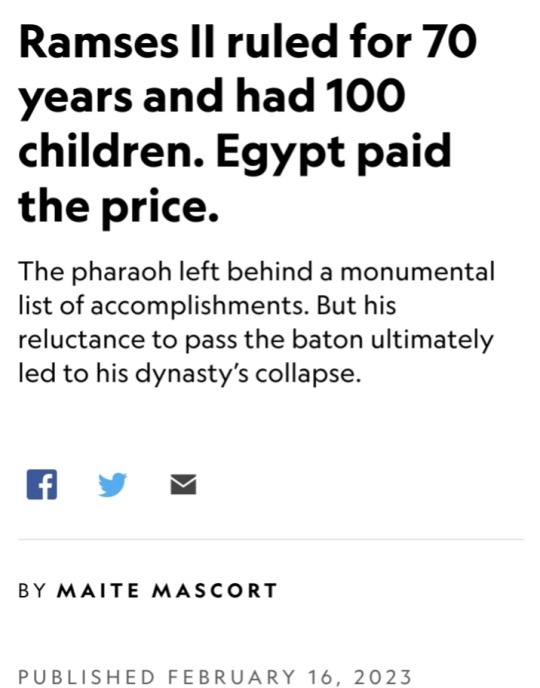

Few individuals in Egypt’s history have aroused as much curiosity, and as much skepticism, as Ramses II, third pharaoh of the 19th dynasty, whom history dubbed Ramses the Great.
Today, Ramses II is probably best known for leaving behind a monumental set of works — palaces, temples, statues, stelae — each one extolling his pharaonic achievements.
Every battle was a mighty triumph, every building spectacular, every statue and public work magnificent, every act a near superhuman achievement.
Ramses’ family came to power as outsiders.
They were northerners hailing from the Nile Delta and rose through military service, rather than southerners rising from elite circles in Thebes.
To rally support, Ramses II used these massive monuments to appeal to the people as part of a campaign to proclaim his greatness for all to see.
Ramses lived around 90 years and ruled for almost 70.
Thanks to his building campaigns, Egyptologists know much about his public accomplishments, but questions about his wives and children still remain.
Great royal wives
One of the most striking aspects of Ramses II’s story is the women who surrounded him:
Great royal wives and concubines, secondary wives and daughters, whom he sometimes “married,” for political show or perhaps for real.
He produced an extraordinary number of sons and daughters:
Some records say as many as a hundred. Because of his long reign, many of his children predeceased him.

Out of all of his wives, only two were known to have had prominent roles:
Nefertari and Isetnofret, the first two named great royal wives.
While the former figures prominently in Egyptian sources and countless representations of her exist, little is known of the latter, almost as if Ramses wanted her hidden.
It is only natural to wonder about the reasons for such unequal treatment.
When he became co-regent with his father, Seti I, Ramses II received a palace in Memphis, just south of the Nile Delta, and a large harem, including the first two great royal wives.
The origins of Nefertari and Isetnofret are unknown but that has not prevented the wildest of speculation about them.
Everything suggests that Nefertari was Ramses II’s favorite wife. Her beauty is attested to in the statues and paintings in her tomb in the Valley of the Queens.
However, it is uncertain what she actually looked like, since some images raise doubts about who is depicted.

For example, in Karnak, a small statue of Nefetari stands at the foot of a colossus representing Ramses II, her husband.
The colossus was later usurped by Pharaoh Pinedjem I, who had his name inscribed on it, and the features of both figures may have been modified.
Was only the name changed? Is that beautiful face still Nefertari’s? Egyptologists believe so.
Nefertari took part in official events alongside Ramses.
She was shown celebrating his coronation, in festivities of the god Min, and in Nebunenef’s enthronement as High Priest of Amun.
Her diplomacy culminated in a peace treaty between Ramses and the Hittites several years after the Battle of Kadesh (1274 B.C.) had resulted in a stalemate between the two powers.
Ramses II showed a clear predilection for Nefertari, devotion worthy of a great love story.
When he built the great temple of Abu Simbel, he made sure that Nefertari, then deceased, was on the facade, next to Tuya, his mother.

In this temple, Nefertari is transformed into Sopdet, the star Sirius, whose appearance presaged the Nile’s annual flooding.
Farther north, another smaller temple dug into rock is dedicated to Nefertari herself.
There, she is identified with the goddess Hathor. Carved into its facade is a tribute:
“Nefertari, she for whom the sun shines.”
Was Isetnofret the forgotten one? So it seems.
Until Nefertari died, around year 26 of Ramses II’s reign, Isetnofret’s likeness did not appear in the many temples the king built in Nubia, nor in those in Karnak and Luxor, where Nefertari is often portrayed.
Isetnofret was finally represented in some temples for her connection with her children.
Nefertari’s image may be seen in more places, but it was Isetnofret who bore her husband the two children closest to his heart.

Sons and daughters
Ramses II had a hundred or so sons and daughters with the wives in his harem.
Of his recognized children, some would play important roles, but only those born to Nefertari and Isetnofret appear on his monuments.
In the Nubian temple of Beit el Wali, a young Ramses, then co-regent with his father, Seti I, is shown suppressing a Nubian uprising.
The pharaoh’s royal chariot is flanked by two figures identified as Amenherkhepshef, his eldest child with Nefertari, and Khaemwaset, Isetnofret’s son.
Of all Ramses II’s sons, Khaemwaset is believed to have been his favorite.
Instead of taking up arms against his elder brother (also named Ramses), Khaemwaset became Grand Master of the Artisans of Ptah, a title in Memphite doctrine equivalent to High Priest of Amun in Thebes.
He also restored a number of pyramids in his father’s name. His work is still evident on the pyramid of Unas, from the 5th dynasty.
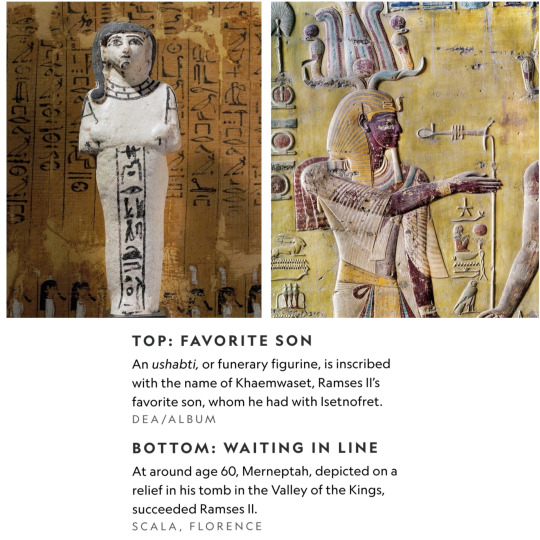
Khaemwaset also planned and directed the work of the “minor galleries,” the Serapeum at Saqqara, the collective tomb of the Apis, sacred oxen of Memphis.
Auguste Mariette’s 1850 excavation of the Serapeum revealed the mummy of a man named Khaemwaset, wearing a golden mask with several ushabtis.
It proved uncertain that it was the mummy of Ramses II’s son, and the location of Khaemwaset’s tomb remains unconfirmed. Much evidence suggests that it is in the necropolis of Saqqara.
The daughters of Ramses II’s great royal wives also held key positions in his court.
In fact, many became great royal wives themselves after marrying their own father.
It had become customary for 18th-dynasty pharaohs to marry their daughters.
While his great royal wife Tiye was alive, Amenhotep III married their daughter Sitamun.
Later, Akhenaten married at least two of the daughters he had with Queen Nefertiti.
No one knows if these marriages were consummated or purely ceremonial.

Ramses II appointed several daughters / great royal wives after the deaths of Nefertari and Isetnofret.
Bintanah (Isetnofret’s firstborn) was followed by Merytamon and Nebettawy (daughters of Nefertari) and Henutmire.
In addition to these daughters, other princesses outside the family also bore the title of Great Royal Wife, such as Maathorneferure, daughter of the Hittite king, and another Hittite princess whose name is unknown.
If Khaemwaset was Ramses II’s favorite son, everything points to Bintanath having been his preferred daughter.
She was given the titles of not only Great Royal Wife but also Lady of the Two Lands and Sovereign of Upper and Lower Egypt.
Bintanath occupies a privileged place on the facade of the temple of Abu Simbel. She and her sister Nebettawy appear on either side of the colossus.
Some historians believe Nebettawy’s mother was Isetnofret, but others consider her Nefertari’s daughter.
Fractured legacy
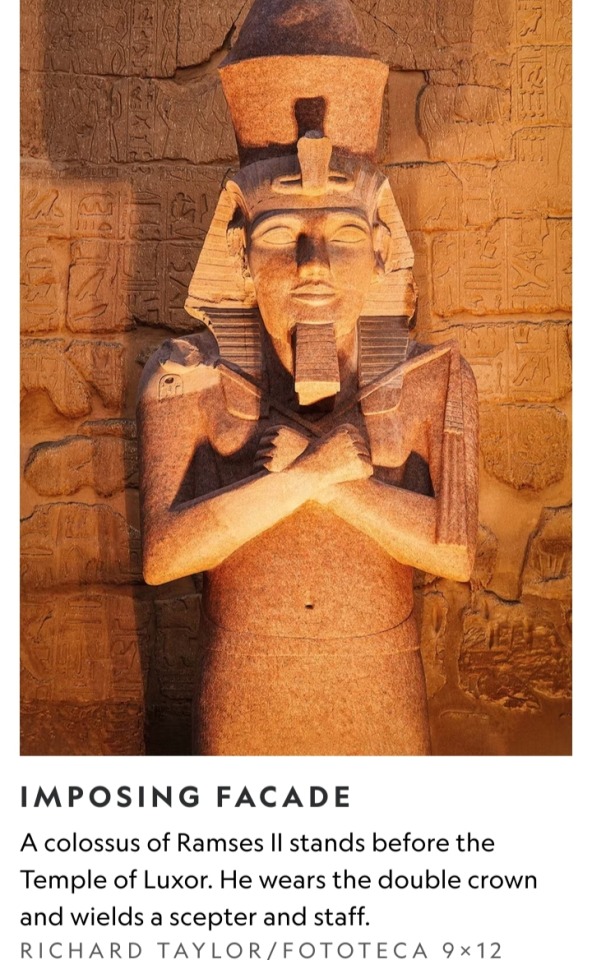
Ramses had no problems siring heirs with his many wives during his long life, but these sons would be forced to be patient; their father held tightly to his throne for almost 70 years.
Ramses had placed his children liberally throughout Egypt’s bureaucracies, corporations, priesthood, and military to foster loyalty he did not naturally inspire.
He was an outsider, a northerner hailing from the Nile Delta, disconnected from the wealthy elites in southern Thebes.
Ramses’ source of strength rested on ties to, not the moneyed or religious classes, but the military. Placing his sons in powerful positions across Egypt helped strengthen Ramses’ hold in these areas.
By the time Ramses II died in 1213 B.C., he was around 90 years old and had outlived many of these sons.
Amenherkhepshef, Ramses’ oldest son and crown prince, died when he was 25 years old.
Khaemwaset also did not outlive his great father and died in his mid-50s around 1215 B.C.
It would be a child of Isetnofret, her son Merneptah, who was 13th in line, who succeeded Ramses.
Merneptah was around 60 years old, well past middle age, when he became pharaoh and donned Egypt’s double crown.
After decades of waiting in the wings to take power, Merneptah might have expected a stable reign, like his father’s, but his hopes were in vain.
During his 10-year reign, his troops were able to defend Egypt successfully from a series of attacks from enemies in the east and west.
But the seeds sown by Ramses II would lead to chaos after Merneptah’s death.
Rivals for the throne, some of whom may have been sons of Ramses II, pushed Egypt into a period of decline and civil war.
By around 1189 B.C., the 19th dynasty would come to an end.

#Ramses II#Ramses the Great#Nefertari#Isetnofret#Seti I#Valley of the Queens#Pharaoh Pinedjem I#Hittites#Battle of Kadesh#Abu Simbel#Tuya#Amenherkhepshef#Khaemwaset#Auguste Mariette#Bintanath#Ancient Egypt#Egyptian Civilization#Egypt#egyptologist#Egyptology#Nineteenth Dynasty of Egypt#19th Dynasty of Egypt
23 notes
·
View notes
Text
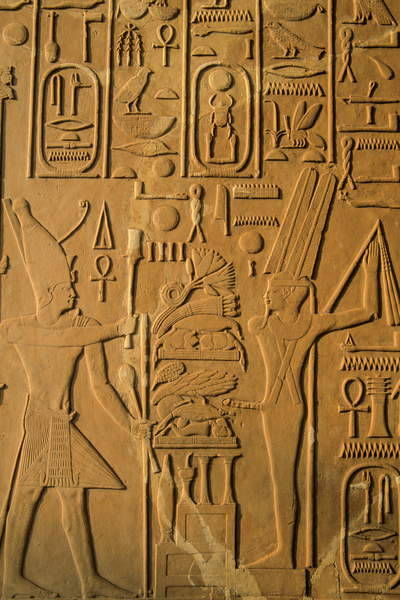
Relief from the White Chapel of Senusret I, Karnak Open Air Museum.
129 notes
·
View notes
Text





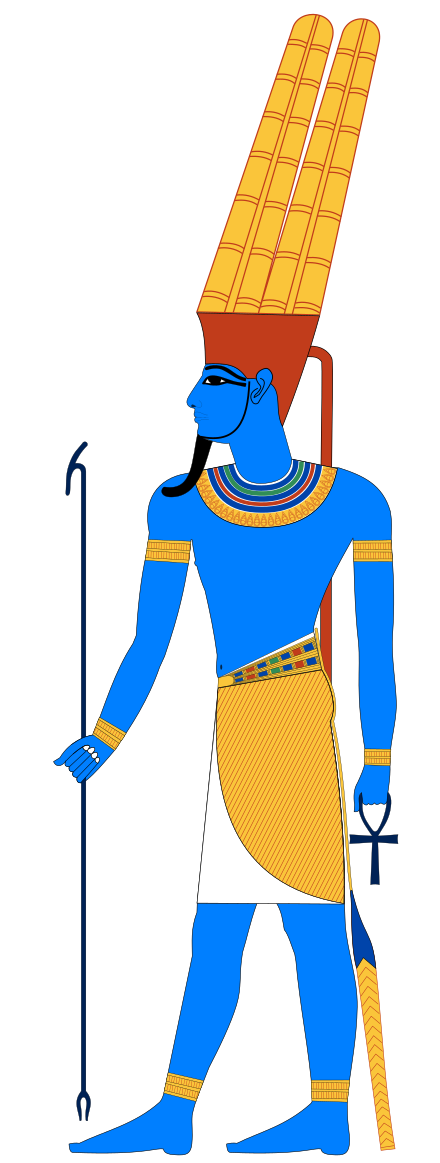
Amun
Other names:Amon, Ammon, Amen, Amana, Yimen,
"The Hidden One", "King of the Netjeru"
Major cult center:Thebes
Symbols:two vertical plumes, the ram-headed Sphinx (Criosphinx), Solar disk, Blue, Nile goose, Lion, Lapis lazuli, Numbers 2 and 7, Shutt crown/Swty, Ammonis cornua, Mollusc animals
Domain:Sun, sky, Earth,
Powers: balance (creation and destruction), justice, protection, enlightenment, prosperity, revenge, vitality, healing, royalty, political power
Hybrid Gods:Amun ra, Amun min, Zues ammon, Jupiter ammon
Consort:Amunet, Wosret, Mut
Offspring:Khonsu
Greek equivalent:Zeus
After the rebellion of Thebes against the Hyksos and with the rule of Ahmose I (16th century BC), Amun acquired national importance, expressed in his fusion with the Sun god, Ra, as Amun-Ra (alternatively spelled Amon-Ra or Amun-Re).
Amun-Ra retained chief importance in the Egyptian pantheon throughout the New Kingdom (with the exception of the "Atenist heresy" under Akhenaten). Amun-Ra in this period (16th to 11th centuries BC) held the position of transcendental, self-created creator deity "par excellence"; he was the champion of the poor or troubled and central to personal piety.With Osiris, Amun-Ra is the most widely recorded of the Egyptian gods.
As the chief deity of the Egyptian Empire, Amun-Ra also came to be worshipped outside Egypt, according to the testimony of ancient Greek historiographers in Libya and Nubia. As Zeus-Ammon, he came to be identified with Zeus in Greece.
Amun and Amaunet are mentioned in the Old Egyptian Pyramid Texts.The name Amun (written imn) meant something like "the hidden one" or "invisible".
Roles
Personification of the hiddeness of the primeval waters. Kings of the gods and god of the wind,solar god,creator god and fertility god. God to call upon if you get stung by a scorpion or if you vemon from a scorpions tail.
Features
Part of the Ogdoad.He wears a crown of two vertical plumes, and is either human or has a ram-headed,or is a sphinx.His skin is said to be blue perhaps lapis.
Early History
Amun rose to the position of tutelary deity of Thebes after the end of the First Intermediate Period, under the 11th Dynasty. As the patron of Thebes, his spouse was Mut. In Thebes, Amun as father, Mut as mother and the Moon god Khonsu formed the divine family or the "Theban Triad".

Female counterpart of the Amun and a member of the Ogdoad

Amunet
Other names:Imnt, Amonet, Amaunet
Major cult center:Thebes,Hermopolis (as a member of the Ogdoad)
Consort:Amun
Symbols:Egyptian cobra, snakes, vulture, red crown deshret
Hybrid Gods:Neith-Amunet
Amunet or Imnt is a primordial goddess in ancient Egyptian religion.Thebes was the center of her worship through the last dynasty, the Ptolemaic Kingdom, in 30 BC. She is attested in the earliest known of Egyptian religious texts and, as was the custom, was paired with a counterpart who is entitled with the same name, but in the masculine, Amun. They were thought to have existed prior to the beginning of creation along with three other couples representing primeval concepts.
Roles
Protector of the king,air and invisibility,hidden forces,female counterpart of Amun,part of the Ogdoad.
Description and History
Her name, jmnt, is a feminine noun that means "The Hidden One". She is a member of the Ogdoad of Hermopolis, who represented aspects of the primeval existence before the creation: Amunet was paired with Amun—whose name also means "The Hidden One", with a masculine ending (jmn)—within this divine group, from the earliest known documentation. Such pairing of deities is characteristic of the religious concepts of the ancient Egyptians. In early concepts known as the Ogdoad, the primeval deity group to which they belonged as "Night" (or as the determinative D41 meaning "to halt, stop, deny", suggesting the principle of inactivity or repose),was composed of four balanced couples of deities or deified primeval concepts.
Speculation exists that Amunet may have been conceived by later theologians as a complement to Amun, rather than being an independent deity originally, however, the Pyramid Texts, the earliest known religious texts of Ancient Egypt, mention "the beneficent shadow of Amun and Amunet"
Draconian
Egyptian-Draconian Grimoire Asenath Mason
Let me clarify. The idea of Khepra being the Sun at midnight, or alternatively the Black Sun, is a new invention, only dating back approximately 120 years or so. Before that, historically speaking, he was the god of the sun at dawn, so the idea of him corresponding to the sun at midnight is a modern occultism invention. Amun was the original hidden god, dating back to ancient Egyptian antiquity. Before there was RA, there was Amun. Before the light there was the hidden one. Before the light came onto the scene, there was the hidden. Before the light is always the dark.
Amun was known as the chief of the ancient Egyptian deities, but is also one of the most mysterious in hindsight. He was the patron deity of Thebes, and the easiest way to think of Thebes is that it was the ancient city that was where Karnak and Luxor are located still to this day. He was known as the king of the gods, or the equivalent thereof, but also corresponded to protecting the king, self-creation, and fertility. Briefly, he was a deity that was so open to interpretation that it was up to the individual follower to define him, rather than a set list of correspondences for one to memorize and come into line with.
Amun is often times misunderstood as a solar deity, but in reality, as you can see above, he was actually a nocturnal deity. Well, even that is not true as he did not correspond to the Moon, but rather he corresponded to the nebulous and the hidden, the veiled, unknown, and subjective. Ile was in fact so popular that he was blended with later deities such as Amun-Ra, and to this day his name has still continued in the phrase "Amen." While Aleister Crowley has discussed his perspective on the word, we can confidently say that is only one perspective on it, as he did not address the draconian roots of the deity, but rather the aspects of him that fit his particular magical system. In this working we are going to look at his true ancient history and draconian roots, and make contact with one of the most ancient and veiled deities on the planet that can assist us in developing our dark sight and our ability to see into the hidden and the concealed.
──────⊰In Workings⊱──────
𖤓*Please know basic protections and energy work before attempting any deity work.*☾
*It is important to note that everyone's experiences are different and will work with spirits for different reasons. Some people may like a spirit while others will not and that's okay. Ask these spirits what they will work with you on as well as ask them if they can help you with whatever it is you need.*
Some people may believe Amun and Ra to be the same and some people may work with Amun-Ra. A combination of both deities.
Ideas for honoring and working with Amun may include
Altar
Set up an altar/sacred space for performing rituals or giving offerings. Items may include
⬩Altar cloth
⬩Cup or chalice
⬩Incense and incense burner
⬩Offering bowl
⬩Statues of Amun, ram headed sphinx, lion, snake, goose, or sun
For more information on basic deity work and altar setups check out the deity work post
Offerings: Bread, Lapis Lazuli, Goose figures, Frankincense, Ram figures, Lion figures, Myrrh, Snake figures, Solar charms, Solar stones, Vulture figures
Rituals
Ideas for rituals may include
⬩Fertility rites and rituals
⬩Honoring the life you have
⬩Honoring the sun
⬩Summer solstice ritual
Hymns to Amun-Ra
Lord of truth, father of the gods, maker of men, creator of all animals, Lord of things that are, creator of the staff of life.
Amon-Re "who hears the prayer, who comes at the cry of the poor and distressed...Beware of him! Repeat him to son and daughter, to great and small; relate him to generations of generations who have not yet come into being; relate him to fishes in the deep, to birds in heaven; repeat him to him who does not know him and to him who knows him ... Though it may be that the servant is normal in doing wrong, yet the Lord is normal in being merciful. The Lord of Thebes does not spend an entire day angry. As for his anger – in the completion of a moment there is no remnant ... As thy Ka endures! thou wilt be merciful!
All gods are three: Amun, Re and Ptah, whom none equals. He who hides his name as Amun, he appears to the face as Re, his body is Ptah.
The tempest moves aside for the sailor who remembers the name of Amon. The storm becomes a sweet breeze for he who invokes His name ... Amon is more effective than millions for he who places Him in his heart. Thanks to Him the single man becomes stronger than a crowd.
𖤓𖤓𖤓𖤓𖤓𖤓𖤓𖤓𖤓𖤓𖤓𖤓𖤓𖤓𖤓𖤓𖤓𖤓𖤓𖤓𖤓

For more content follow my main blog to see posts about all kinds of occult/pagan/witchcraft related stuff
If you have any other questions or wish to join a community feel free to join my 18+ occult server
Ask me anything on my blog
#kemetic#kemetic pagan#kemet#neterism#neteru#occult#paganism#baby pagan#paganblr#kemetism#ancient kemet#kemetblr#witchcraft#deity#spirit#spirituality#spirits#witchblr#occultblr#neter#kemeticism#kemetic paganism#kemet pagan#netjeru#pagan#pagan witch#kemetic polytheism#occultism
11 notes
·
View notes
Text
Meteorcare is my version of the shipping web for Sparklecare characters. The ships are plentiful with lots of overlap making for some fun sillies !!!
Get to know them by asking them questions right here right now on the blog!

#ned ver ill#sparklecare#sparklecare hospital#sparklecare au#meteorcare au#exa min ill#amun g Cornelius#russ shen doom
14 notes
·
View notes
Text
Egyptian Mythological Figures to Use for Dislyte Ocs:
Aker, Amathaunta, Ammit, Amn, Anat, Anhur, Ani, Anuke, Apet, Astarte, Aten, Bat, Bennu, Besna, Denwen, Djefa, Dua, Fa, Hatmehit, Haurun, Hedetet, Hedjhotep, Heka, Heptet, Heneb, Heset, Iah, Iabet, Iat, Ihy, Imentet/Amentet, Iusaaset, Kebehut, Kek, Ken, Khepri, Khesfu, Kherty, Khnum, Khonsu, Kneph, Maahes, Maat, Mafdet, Mehen, Menhit, Imhotep, Meret, Meskhenet, Min, Mnevis, Montu, Mut, Kith, Nehmetawy, Nekhbet/Nekhebit, Nemty, Neper, Nepit, Nun, Pakhet, Pelican, Perit, Pesi, Petbe, Ptah, Qetesh, Rekhit, Renenet, Renpet, Fetket, Sait, Satet, Sehith, Seker, Sekhemus, Selkis, Sepa, Sepes, Seshat, Setem, Shed, Shehbui, Shezmu, Sopdu, Taweret, Tayt/Tayet, Tefnut, Tenenet, Thermuthis, Tjenmyt, Thmei, Uneg/Weneg, Unut, Usit, Wadjet/Uatchit, Wadj-wer/Wadjwer, Wosret,
Other: Amun (male form of Amunet), Anput (female form of anubis), Naunet (female version of Nun), Nebethetepet (female version of Atum), Temt (female version of Atum),
Note: Keep in mind that this list may not be accurate and/or may be missing some mythological figures because I put down what I knew and did the bare minimum of google searching.
#Dislyte#Dislyte oc#Dislyte oc’s#Mythological figures for Dislyte oc’s#Egyptian Gods#Egyptian Mythology#Egyptian Deities
18 notes
·
View notes
Text
Did #AncientEgypt have the science of a #microscope 🔬? #Min #Amun
Song - Mother Ninti - #NuwaubianHotep
#NibiruSoundStudios
https://www.instagram.com/reel/CQ5jGJejsLv/?igshid=MTc4MmM1YmI2Ng==
0 notes
